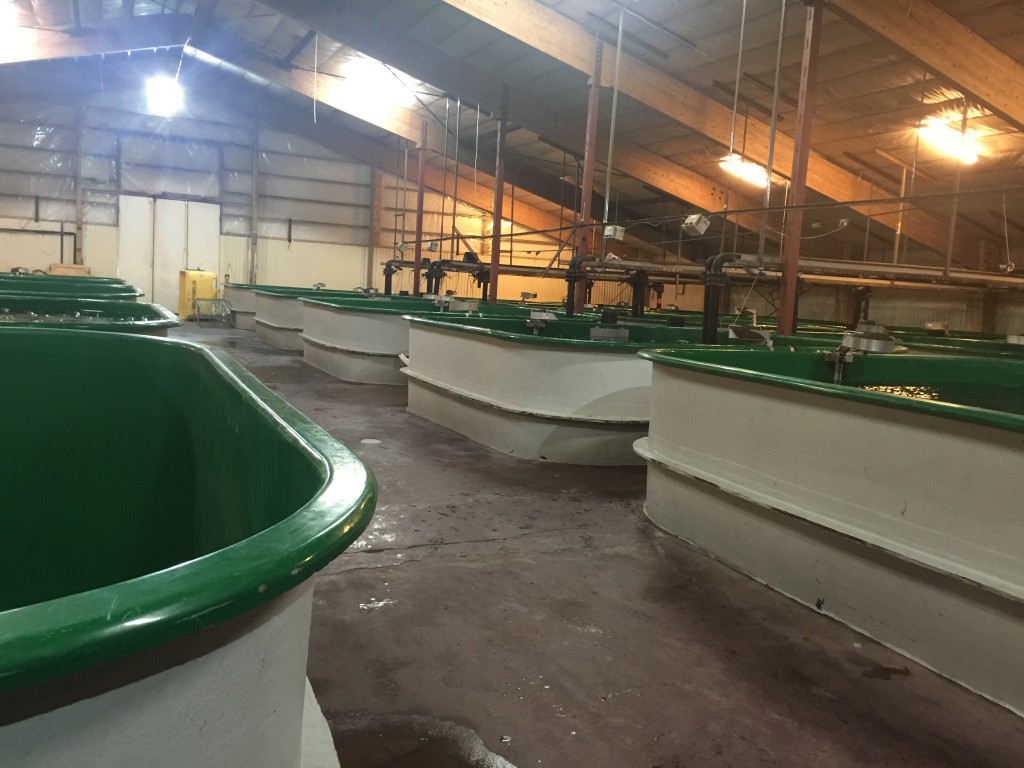
After visiting the Aquaculture Farm where they raise Arctic Char, I have learned a lot more about the process of raising fish for food in large amounts. I did not have the best view of fish farms before seeing one and after seeing one, my view has changed to a more positive view. I have learned that this is probably a better way to reach the demand for fish as opposed to wild caught fish, in terms of what’s best for the environment. According to NOAA’s Office of Aquaculture, only about 5-7% of American’s seafood comes from American fish farm industry. Much of the remaining is imported or is wild caught. This is a very unsustainable percentage of where our seafood is coming from, assuming the effects the transportation has on the environment and the fact that we may not know how the imported fish are raised or caught or what our demand is doing for other economies. It is important for our demand for fish to decrease and, at the same time, to grow more fish within the United States.
Following the visit to the farm, we discussed the different aspects of sustainability of the farm and how it could be improved possibly. One thing I thought was especially important was the farm’s feed to fish conversion ratio. Gusti, our guide, explained it was around 1.13 kg feed to 1 kg fish meat and he is making efforts to even reduce that to below 1 kg for feed, making the fish product grow without buying as much feed. Something else Gusti explained that I would have thought differently of was that Arctic Char liked to be packed together quite tightly to keep them relaxed and comforted. I think it would be nicer for the fish to have a more natural environment with their natural ecosystem surrounding them. If the flavor doesn’t change, however, I can’t see this as being an important factor for the fish farmers to consider.
Something interesting I learned there was that they keep their light on all the time. It is a mix between white and yellow lights so it seems more like natural light. Gusti explained they do this to keep the fish from telling what season it is and maturing quicker than the farmers would like the fish to, ultimately dragging out their natural maturity cycles. He also explained that they keep the fish there for about 2-3 years depending on each fish and how much time it takes for them to get to the proper size that the farm can sell. This is interesting because SeafoodSource explains that Arctic Char can live up to about 25 years, continuing to live after they spawn, unlike their Salmon cousin. This makes me wonder what shortening the life cycle and decreasing the rate of maturity might do for the fish.
I’m glad to have learned about how fish farms operate and to see one with my own eyes. It has changed my opinion of them and I would like to learn more about the health benefits as well as seeing what the effects of fish farming might do for other species. If the fish aren’t mixed with wild fish, then I think it is a much different story as far as the adaptability of the fish to survive in the wild. Because these fish don’t know the wild, their personal lives might not be changed, but I wonder if their flavor changes. I would also like to look into the effects of the high demand for fish. It is obvious that when man intervenes with nature at such an extent, something is not right. Maybe the problems I originally saw have more to do with the demands than the production. As I continue my education on fish farm production, I’m glad to have a first hand visual insight to the inner workings that can help guide my continued research.
Sarah McCord
